Dry-laid stone retaining walls have been around for ages. Look at the pyramids in Egypt and the stone walls that line much of the European countryside — these structures have stood the test of time.
Unlike dry-joint walls, which use mortar to hold the stones together, properly installed dry-laid stone walls simply use gravity and friction to stay together. Because the walls slope slightly inward, ground movement actually locks the structure tightly together. Concrete footing is not needed, which saves on labor and material costs.
If you're looking for a retaining wall that will stand the test of time, consider dry-laid stone.
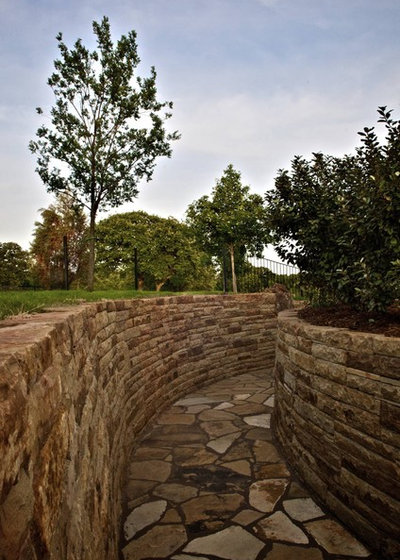
CAVINESS LANDSCAPE DESIGN, INC.
Dry-laid stone walls create a sense of definition, space and privacy in a landscape. They also retain the soil in varied terrains.
If you have a home on a hilly terrain and desire different levels of landscape, this art form may be a good option.
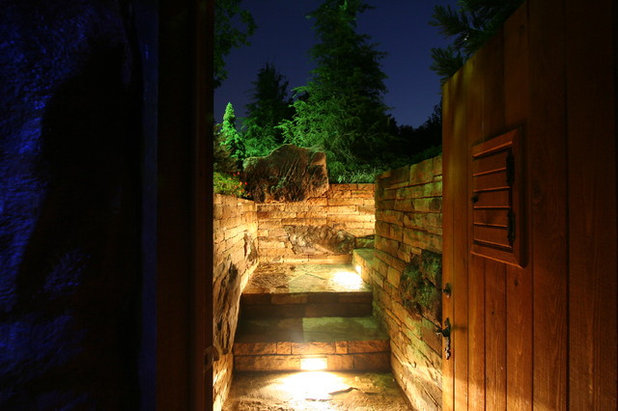
CAVINESS LANDSCAPE DESIGN, INC.
Kinds of stone used. Consider using native stone in your area for dry-laid retaining walls. Fieldstone and boulders create a more natural look, while layered flagstone can provide a groomed and clean look. You can also integrate boulders within the wall, as shown here, to combine both.
Stone with a sandy texture, such as the red sandstone found in the American Southwest, may not be wise to use around a pool or patio area because of the sandy residue that can accumulate.
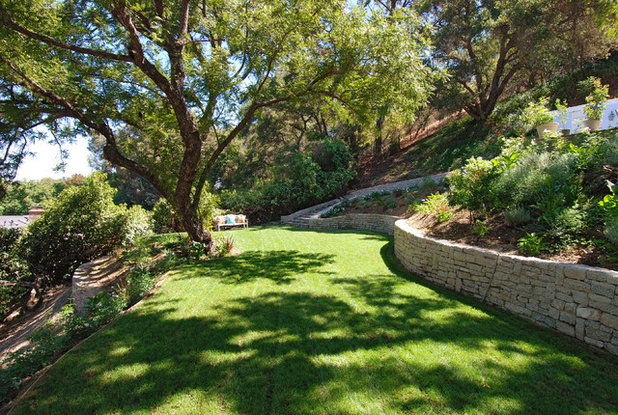
KellyBaron
Benefits of dry-laid stone retaining walls:- They resist fire, water and insects.
- They can be recycled due to the dry-laid method.
- They provide natural drainage without any damage to the structure, unlike mortared walls, which tend to crack and break into sections.
Note: You may not want to use the dry-laid method right up against a swimming pool because of the silt that filters through the stone wall from rain or sprinklers. A dry-joint method would be a better choice to achieve the same look.
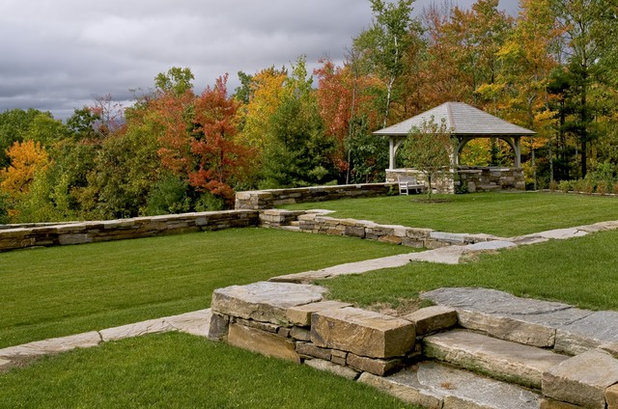
Smith & Vansant Architects PC
Installing the stone. Achieving a sound structure means adhering to specific guidelines. When choosing a contractor, make sure he or she is experienced in the craft and check out previous work. Each stone is hand chiseled to fit within the wall, and there are no wobbly stones. Stone wedges are used to stabilize rocks within the wall. Rubble rock, or backfill, is placed behind the cut stones to help with the integrity of the wall.
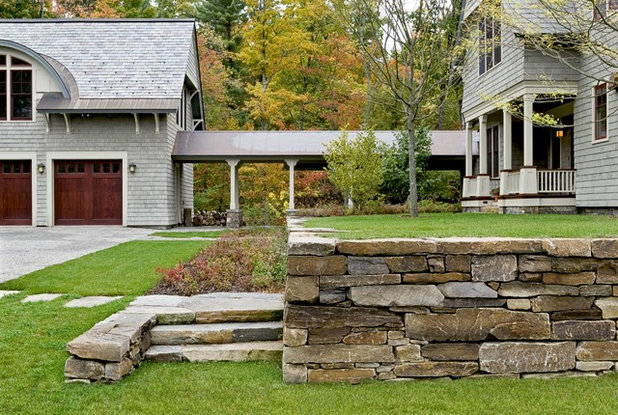
Smith & Vansant Architects PC
Cost. Labor costs vary greatly, depending on the area and the expertise of the contractor, but usually are between $36 and $45 per square foot. Materials are extra.
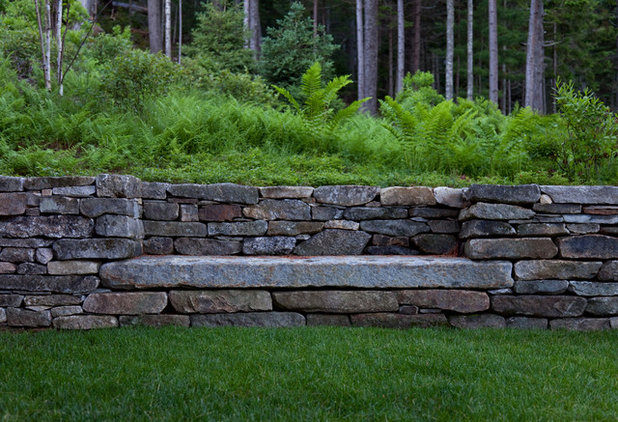
Matthew Cunningham Landscape Design LLC
Design options. Dry-laid stone retaining walls can complement most landscape designs. Curving lines or structured lines create definitive boundaries from one space to another.
The retaining wall pictured above has a stone bench integrated within the structure. If you are limited in space for seating, why not integrate seating into your wall?





